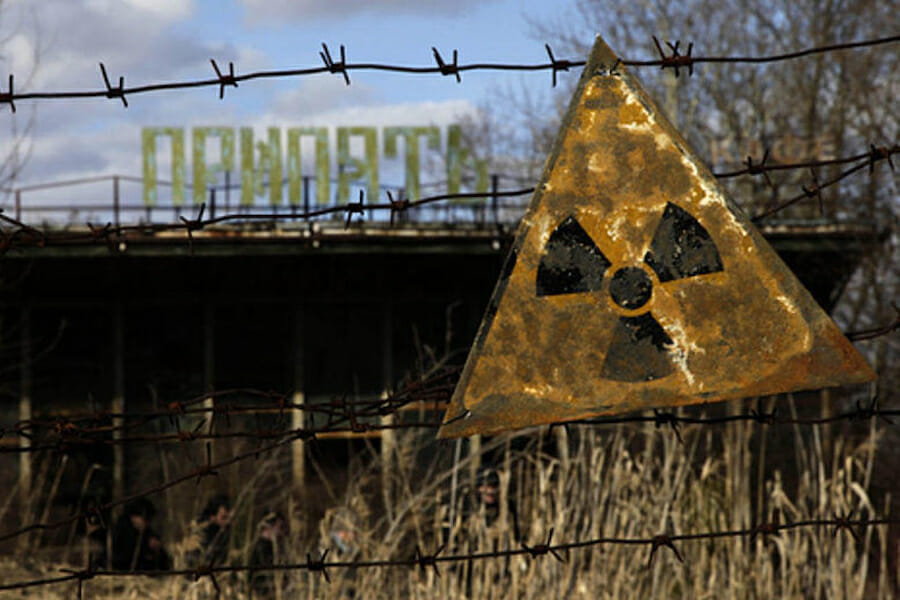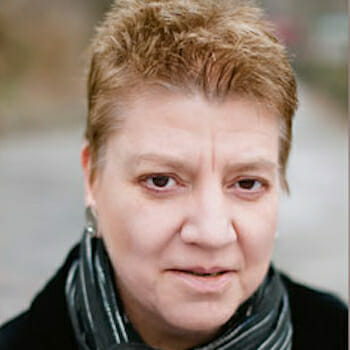
Culture
From Chernobyl to Fukushima: Review of PBS’s ‘Radioactive Wolves’
Many of us can remember Ukraine a quarter of a century ago when the city of Chernobyl experienced the horror of a nuclear meltdown and the ineptitude of the Russian government unable to cope with the disaster. We remember the Russian government’s persistent denials of responsibility for the accident. At the same time we can visualize the blasted reddish scorched earth, collapsed buildings and faces of wailing children. But the landscape has changed. A just-released PBS special “Radioactive Wolves,” what one reviewer called a “best case scenario” for this site of the post nuclear age, today powerfully portrays Chernobyl.
The film shows that Chernobyl is no longer a scorched earth site. Dense woodlands are home to an explosion of wildlife, including what may now be the world’s largest concentration of endangered gray wolves. Even though vegetation and animal life continue to show high concentrations of inherent radioactivity, they have flourished. The release of this film, paean to the return of the gray wolf though it is, may also suggest a hidden political agenda. A way of arguing that if nuclear refugees just emigrate politely and sit tight, in a quarter of a century the blasted earth will have reverted to the wilds and all will be well. The refugees may never be able to return to their homelands, but perhaps the land will be viable again.
Today, images of the devastation wrought by Japan’s great earthquake, the tsunami, and the Fukushima nuclear power plant meltdown, remind one of Chernobyl 25 years ago. There are some clear and devastating facts. Japan’s scorched earth is registering very high levels of plutonium outside the Fukushima nuclear plant and in the oceans the levels are substantially higher than those of Chernobyl. Ingested or inhaled, plutonium is a carcinogen. And nearly seven months after the March 2011 meltdowns at Fukushima, about 80,000 people are still living in wood and plastic shelters or reconverted structures because their communities were too close to the Fukushima plant or to the plutonium.
Clearly new housing must be erected and the refugees must be evacuated but although action has been taken here and there on the local level, no coherent national plan has yet emerged. Sadly, the example of Chernobyl appears to have taught Japan’s then Prime Minister, Naota Kan, and his Cabinet nothing at all.
Kenichi Matsumoto, special adviser to Mr. Kan’s cabinet, describes the former prime minister as being “[i]solated, out of his depth and scared of telling the public the truth”- as the country’s Fukushima nuclear crisis unfolded. Matsumoto is not alone in also accusing TEPCO, the operator of the nuclear plant, of trying to play down the disaster. Matsumoto also says that the Japanese government knew right from the start that areas around the plant – like those at Chernobyl – would be uninhabitable for 10 or even 20 years. “The Government should have conveyed the truth to the evacuees, but it felt scared. It feared telling the truth to the people,” Matsumoto argues. And not much has changed since the initial onslaught of the disasters, even with Kan’s successor, Prime Minister Yoshihiko Noda.
The reactions of Japanese people in three of the affected areas near the Fukushima power plant to their uncertain fates and to the government’s perceived suppression of the truth and its perceived incompetence, ranges from resignation to a very un-Japanese public fury directed at the government. People in the town of Rikuzentaka, where residents make a living by fishing, farming or through small businesses, express a weary resignation at the lack of progress in restoring the city. “If the current situation continues, young people will desert the town, and Rikuzentakata will be only for the elderly,” one local resident says. “There is no point in restoring the depopulating town whose population is aging to its original state,” another resident suggests. In the town of Futaba, some are actively engaged in a furious debate over what should be done about evacuation.
More than 760 evacuees are packed in an unused high school. Opinion is divided on whether evacuation should be compulsory and expanded, or if it is entirely the wrong solution and that thousands of people have already been evacuated unnecessarily. “I don’t know what to do,” says a housewife, whose husband used to work at the Fukushima plant, but is now unemployed. “We don’t have anywhere to go.” Evacuees from the town of Namie, shouted in fury at an October 6 meeting, where government officials’ attempted, with little success, to explain to residents how to apply for compensation. Although victims can now, after nearly seven months, claim compensation, they are furious about the red tape they have to wade through. Applications for help can run to over 60 pages and are nearly incomprehensible to residents. Namie town residents, like others in the region, are in despair that they still cannot get on with their lives, seven months after the disasters.
But there are some important signs of hope and direction. Not from the national government, but from some of Japan’s top architects, who are partnering with local government and local firms to begin the task of rebuilding. However, architects can’t deal with radiation levels, nor with the loss of employment, nor with the need for repopulation, nor with compensation for damages. But they can plan towns and cities, and they can build. Given the resources, they can build the structures that are needed for the 80,000 refugees. And, as it turns out, they can do even more for citizens and for local governments than the national government.
Yasuaki Onoda, professor at Tohoku University’s Department of Architecture in Sendai, is a founding member of ArchiAid, an organization of over 200 architects founded to aid in rebuilding the Tohoku region. Onoda and the architects of ArchiAid, who include three of the top architects in Japan, Toyo Ito and SANAA and the partnership of Kazuyo Sejima and Ryue Nishizawa, have been brought into the towns of Kamaishi and Higashimatsushima to begin the planning process.
Toyo Ito, architect of internationally renowned buildings such as the Sendai Mediatheque, has arrived in central Kamaishi as a volunteer. Ito will help local government formulate plans for redevelopment. As he told the Japan Times, “synthesizing the desires of the city with those of the citizens.”
Meanwhile, in the city of Higashimatsushima, SANAA partners Kazuyo Sejima and Ryue Nishizawa are also working as volunteers in redevelopment with residents on the island of Miyato. The firm of SANAA is internationally renowned— Sejima was last year’s director of the Venice Biennale International Exhibition of Architecture, and Sejima and Nishizawa were jointly awarded the Pritzker Architecture Prize. Onoda, along with these renowned Japanese architects, is dialoguing with local officials and the people of the region’s towns and villages, drawing up town plans that take their culture and their expressed needs into account. Onoda has expressed his philosophy and that of the architects of ArchiAid in clear, eloquent terms, “In Japan, architects have not usually been involved in the early stages of rebuilding after disasters. The first phase was for civil engineers, and after that the architects came in. It was very segmented. The civil engineers are great, very rational, but they don’t imagine people’s lifestyles. I think from the beginning we need to imagine what will happen in these places when people build houses and live in them. That’s why architects need to be involved early on.”
The work of the volunteer architects of ArchiAid has been well received by local residents in Tohoku. Kuniyuki Okuda, who heads the Miyato Residents’ Center, approved the architects’ plans to move some housing to higher ground and said that he was pleased with their creations. Additionally, they listen to the villagers’ thoughts, ideas and concerns. Okuda said that “people have just come out of nowhere to help us — volunteers helping with clearing debris and now SANAA, (Sejima and Nishizawa) helping make plans for rebuilding.” The city of Higashimatsushima will work with SANAA in order to merge plans for rebuilding and the final reconstruction plan will be published in December.
Of course, Japan’s core problems in Tohoku and the larger questions articulated three months ago, still remain, for the coming five years. What will be the extent and cost of the physical and emotional care needed for evacuees? How will those costs be met? How can a disaster struck economy be revitalized? How can new jobs be created? How can Japan continue to construct new homes and create new communities better suited to an elderly population? How can the spirit of traditional communities populated primarily by people over 65 and ripped apart by disaster, be revitalized? How can “acceptable” radiation levels be determined? And, how can 80,00 refugees be relocated in safe areas and housing?
But the work of ArchiAid and its constituent architects gives hope that the initial steps have been taken.

